Pharmaceutical water must meet quality standards – it participates in the entire pharmaceutical production process, including preparation, cleaning and disinfection. Therefore, pharmaceutical water is an important part of the pharmaceutical production process. It is necessary to ensure that the design contamination risk of pharmaceutical water in the preparation, storage and distribution system is controlled, and that the pharmaceutical water system can provide pharmaceutical water and pharmaceutical steam that meet the quality requirements.
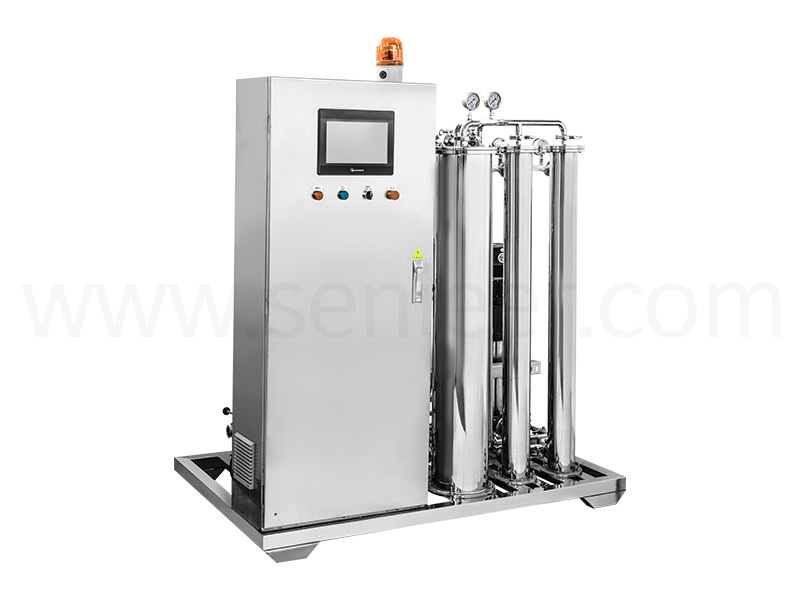
Composition Of Pharmaceutical Water System
The pharmaceutical water system is mainly composed of a preparation unit and a storage and distribution system, and the pharmaceutical steam system is mainly composed of a preparation unit and a distribution system, which are similar. Among them, the preparation unit mainly includes softened water machine, purified water machine, high-purity water machine, distilled water machine and pure steam generator. The reserve and distribution system mainly includes reserve unit, distribution unit and water point pipe network unit.
Classification Of Pharmaceutical Water
From the perspective of standard classification, pharmaceutical water can be divided into Pharmacopoeia water that meets the requirements of the Pharmacopoeia and non-Pharmacopoeia water. Among them, non-Pharmacopoeia water refers to pharmaceutical water that is not included in the Pharmacopoeia, but can be used for production, such as drinking water, softened water, distilled water, reverse osmosis water, ultra-filtered water, deionized water, laboratory water, etc. Non-Pharmacopoeia water needs to at least meet the requirements of drinking water. If necessary, non-Pharmacopoeia water can also be used in pharmaceutical production operations, such as for cleaning production equipment, as raw materials for API production and laboratory applications, etc. It stipulates that water for injection must be used for the preparation of preparations, so whether it is Pharmacopoeia water or non-Pharmacopoeia water, it must meet the specified microbial limit standards.
From the perspective of use, pharmaceutical water is mainly divided into two categories: bulk water and packaged water. Bulk water, also known as raw water, refers to the water used in the pharmaceutical production process, and packaged water, also known as finished water, refers to the packaged finished water produced in accordance with the pharmaceutical process. Bulk water approved by the Chinese Pharmacopoeia includes purified water and water for injection, and approved packaged water includes sterile water for injection. Bulk water approved by the European Pharmacopoeia includes bulk purified water, high-purity water and water for injection, and approved packaged water includes packaged purified water and sterile water for injection. Bulk water approved by the US Pharmacopoeia includes purified water, water for hemodialysis and water for injection, and approved packaging water includes bacteriostatic water for injection, sterile water for inhalation, sterile water for injection, sterile flushing water and sterile purified water.
Water Production Process Management
Commonly used process waters are: raw water, which refers to the water before entering the water treatment process; purified water, which is produced from tap water after multi-media filtration, activated carbon filtration, softener filtration, security filter, reverse osmosis and EDI processing. Water for injection; water for injection is made of purified water by high temperature heating and distillation, so it is also called distilled water; pure steam is the steam produced by heating purified water at high temperature.
Preparations Before Making Water
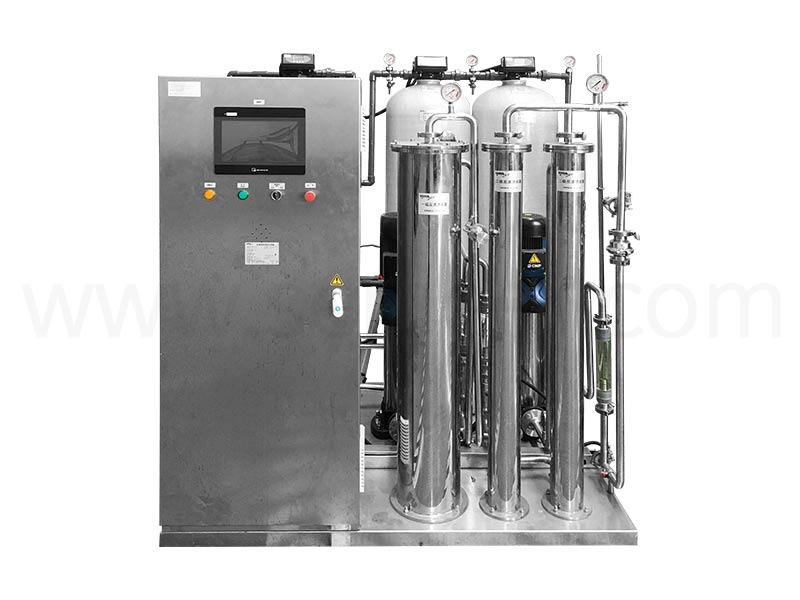
Each system should be checked before the equipment is turned on. The main inspection items for the preparation and storage systems of purified water, water for injection, and pure steam generators are similar: check the power supply voltage, tap water supply (water level in the purified water storage tank), industrial steam pressure, compressed air pressure, check each connection and pipeline connection to ensure that there is no leakage in the pipeline; check the status of the respirator valve of the water storage tank, test the equipment, and check the working status of each component.
In addition, each system also has some separate inspection items: the purified water system should also check the liquid level of the dosing tank and the status of each manual valve; the water for injection system should first check the status of the respirator valve of the water injection tank, check the respirator Check whether the temperature reaches 85°C, and then try to run the equipment to check the working status of each component; both the water for injection and the pure steam generator system should check the pipeline valves of industrial steam, and drain the condensed water in the pipeline.
How To Make Water
The preparation and storage process of purified water includes: heating the raw water tank, making water, and circulating; checking the brine tank, adding industrial salt, preparing saturated brine, and filling in the dosing record form; checking the alkaline water tank, adding sodium hydroxide solution, and Complete the solution preparation record form. The preparation and storage process of water for injection can be summarized as preheating, water preparation, circulation and heat preservation. The process of preparing clean steam is similar, mainly including preheating, gas production and sampling.
Water System Monitoring And Management
The monitoring and management of the water system should start with the monitoring of water quality. Only when the water has passed QC inspection and proved that the water quality is qualified, the engineering personnel can notify the production personnel to use it. Engineers should observe the online conductivity at any time to ensure that the conductivity is less than or equal to 1.0 μS/cm before water enters the storage tank; under the condition that the continuous water consumption is not large, if the conductivity of the circulating water in the storage tank slowly rises to close to 1.0 μS/cm, at this time, part of the pure water needs to be discharged to keep the conductivity of the circulating water in the storage tank within the range of ≤1.0 μS/cm. In addition, attention should be paid to the difference between the alert limit and the action limit. Alert limits are usually determined by trend analysis based on the normal operating level of the system and detection data. If the limit is only exceeded, no further processing of the system is required, and the corresponding monitoring items or monitoring frequency can be increased. However, when the system reaches the action limit, in order to prevent the system from failing and causing losses, the system needs to be investigated and dealt with.
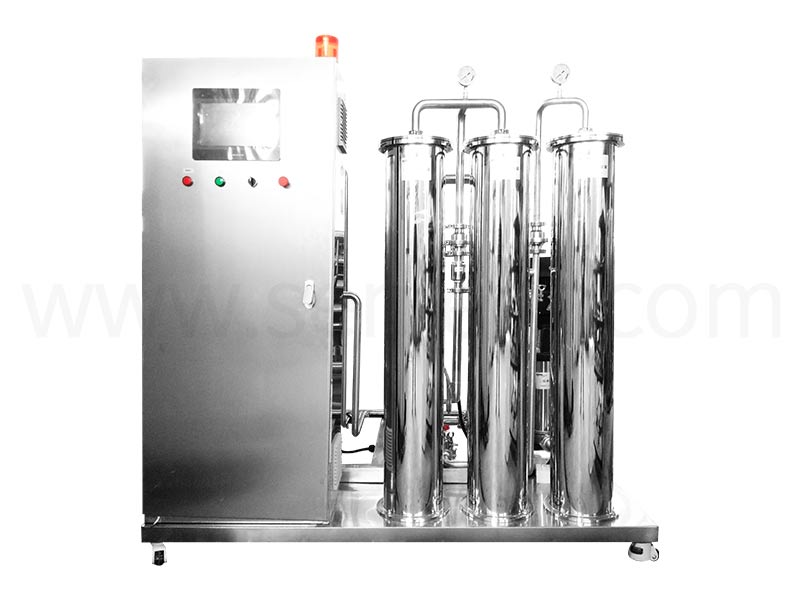
Second, a daily monitoring plan for each system should be developed. The raw water used in the company’s water production should be sampled and inspected every three months. The inspection items include traits, pH, and microbial limits. For the purified water system, it should ensure that the total water outlet, the total water outlet and the purified water storage tank of the purified water system are sampled and inspected every week, and other fulcrums complete a round of inspection every month, and the designated personnel shall formulate the sampling of the current month each month. plan. For the purified water point of the injection workshop, if it is not used for more than one month, it may not be monitored. At this time, the production department or QC (quality control) can submit a planned deviation and apply for the suspension of the use of the purified water point, and QA (quality assurance) is suspended at the water point” Not to be used for the production of GMP (Good Manufacturing Practice) related products” signage. If there are no special circumstances, the water point should be monitored for three rounds before use to ensure that the physical and chemical indicators are qualified and the microbial limit results are qualified, and the production product can be released. Purified water points that have been out of use for less than one month can be activated after normal monitoring. In addition to monthly monitoring, attention should also be paid to daily monitoring and testing of purified water systems. The testing items include properties, pH, nitrate, nitrite, ammonia, electrical conductivity, total organic carbon, non-volatile matter, heavy metals and microbial limits .
For the water for injection system, the total water outlet, the total water return outlet, and the total water outlet should be sampled and tested once a day. The test items are conductivity, TOC (total organic carbon), microbial limit, and bacterial endotoxin. Other water points should ensure that samples are taken on a weekly basis, rotating daily, and completing one round of testing every week. If the water for injection system has been shut down for more than a week, the water for injection system should be cleaned and disinfected again, and the total water point and use point of the water for injection should be monitored for three rounds (the test items are the same as above). After ensuring that the conductivity, TOC and bacterial endotoxin are qualified, the workshop It can only be used to produce GMP batch products, and the production products can be released only after the microbial limit results are qualified. If the production cycle is less than one week, it should be ensured that all points of use are monitored within that cycle.
For the pure steam system, the total point should be sampled once a week, and the pivot point should be sampled once a month, if it is not used, it will not be taken. The test items for daily monitoring of pure steam system are similar to those of purified water system, except that bacterial endotoxin needs to be detected.
Sterilization And Sterilization Management
Pasteurization is a commonly used method of disinfection. At a certain temperature, the lower the temperature, the slower the bacterial reproduction; the higher the temperature, the faster the bacterial reproduction; but the temperature is too high, the bacteria will die, different bacteria have different suitable growth temperature and heat and cold resistance. Pasteurization is actually taking advantage of the heat-labile characteristics of pathogens and treating them with appropriate temperature and heat preservation to kill them all. The activated carbon filter of the preparation system is generally pasteurized (sterilized with hot water at 80 ℃ ~ 85 ℃), and the storage and distribution system is generally sterilized by ultraviolet light. The following will take the operation of the equipment used by Renfukang Pharmaceutical Co., Ltd. as an example to describe the sterilization management of the system in detail.
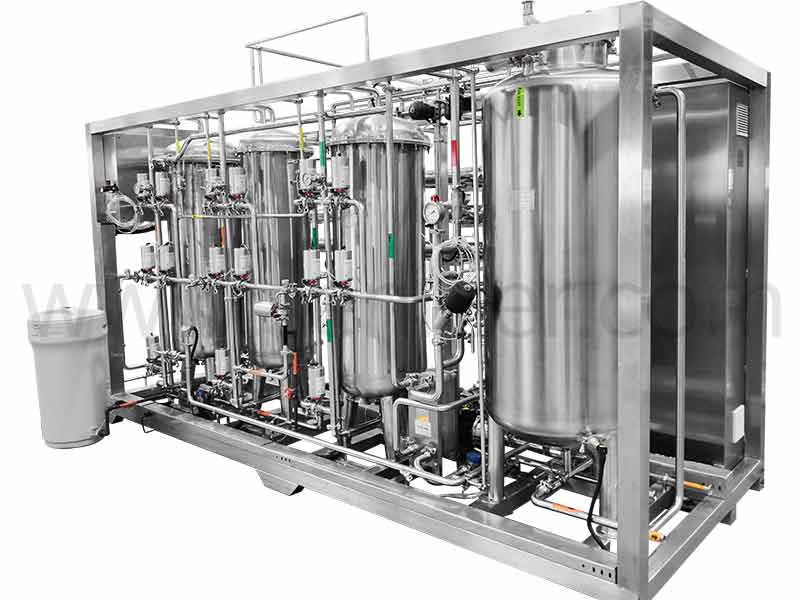
For the water injection preparation system, if the water injection machine is not turned on frequently, the water storage tank needs to be emptied first when it is shut down for a long time. Before preparing water for injection again, the parameter setting interface will generally automatically set the self-sterilization temperature to 121°C, the water inlet flow of the self-sterilization equipment to 0.3 t/h, and the self-sterilization time to 30 minutes . “Automatic”, the device will automatically sterilize when it is turned on.
When sterilizing the distribution system, the injection water should reach the liquid level of 0.8-1 m first, then click “Distribution Process” to manually operate, click “Transfer Pump” to start the cycle, and then click “Heat Exchanger” to select disinfection. The set disinfection mode is: disinfection temperature 121 ℃, disinfection time 30 minutes. After that, the system will automatically run the disinfection mode.
Red Rust Removal Management
In the pharmaceutical industry, red rust is generally a direct product of metal corrosion, which can lead to damage to system components, leakage of pipes, blockage of filter elements, and possibly heavy metal pollution to the water quality of pharmaceutical water. Therefore, it is necessary to regularly clean and disinfect the purified water system and the water for injection system, and record them to remove the microorganisms attached to the surface of the system and prevent the occurrence of red rust. Once red rust occurs, pharmaceutical companies need to pay more attention. If red rust appears on the tank body, it should immediately find relevant parties for passivation treatment; if red rust appears on the pipeline, it should be replaced in time.
Water System Maintenance And Management
For the purified water system, the tap water tank should be cleaned once a year, the raw water tank should be disinfected and drained every two months, the purified water storage tank and distribution system should be pasteurized once, and the raw water tank should be cleaned every month. Perform a surface cleaning.
For the water for injection system, the dust on the surface of the water injection tank, instrumentation and clean frequency converter should be checked frequently, and cleaned in time; all pneumatic valves and electric cabinet ventilation fans should be checked, and the dust in the electric cabinet should be removed in time; Such as temperature sensors, pressure gauges, pressure sensors, conductivity and flow meters, etc.), check and verify safety valves, check/replace breathing apparatus, check the noise, bearings and water seals of purified water pumps and injection water circulating pumps; check heat exchangers Fouling situation, and arrange cleaning.
For pure steam systems, safety valves, heat exchangers, pure water pumps, instrumentation and sensors, heat exchangers, power switches and signal indicators, DC power supplies, various electrical components (such as AC contactors, relay), programmable logic controller (PLC) , recorder, human-machine interface (HMI), various pneumatic valve components, each power supply wire in the control cabinet, traps and equipment scale; timely check/replace pump mechanical seals, motor bearings; check whether the pipeline is Leaks are running; check equipment for grounding/insulation.
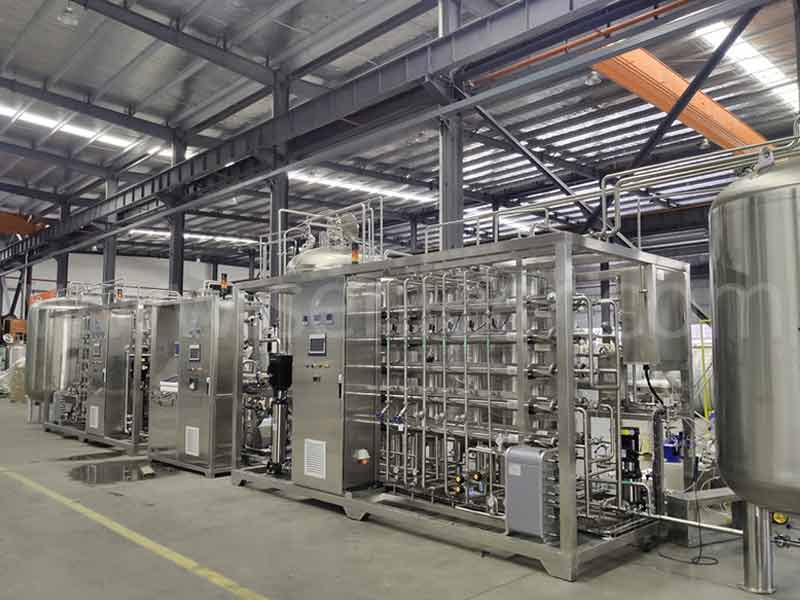
Other Considerations
The operator must strictly abide by the post standard operation, and must pass the post training before entering the post operation. The operating part of the equipment must have protective covers or warning signs, and it is forbidden to stack items near the operating equipment; when operating the steam valve and preparing saturated brine and sodium hydroxide solution, the operator must wear gloves and protective goggles and other labor protection supplies.
After the pipeline is sterilized, the water tank needs to be emptied, and the water needs to be remade; the respirator on the storage tank needs to be closed when the preparation system and distribution system are sterilized; High temperature scalding; because the purified water and injection water in the water production room need to be constantly opened, so when not in production, the purified water should be switched from “water production automatic” to “water production manual” in the automatic mode of the man- machine interface. ”; on the contrary, the injection water needs to be switched from “multi-effect automatic” to “multi-effect manual”, and the “heating” mode of the heat exchanger of the multi-effect distribution system is turned on. The pure steam system can be switched off from “automatic” to “manual”, and the power can be turned off when the temperature drops to normal temperature. During the production process, the engineering personnel should follow the cleaning standard operating procedures and fill in the equipment operation records.
Concluding Remarks
Because pharmaceutical water will directly affect the quality of medicines, the pharmaceutical water system can continuously provide stable and qualified pharmaceutical water, which is the premise to ensure the quality of medicines. Adopting reasonable operation and daily monitoring measures, and maintaining and managing the pharmaceutical water system well, can fundamentally prevent the pollution of pharmaceutical water and ensure the quality of medicines.










